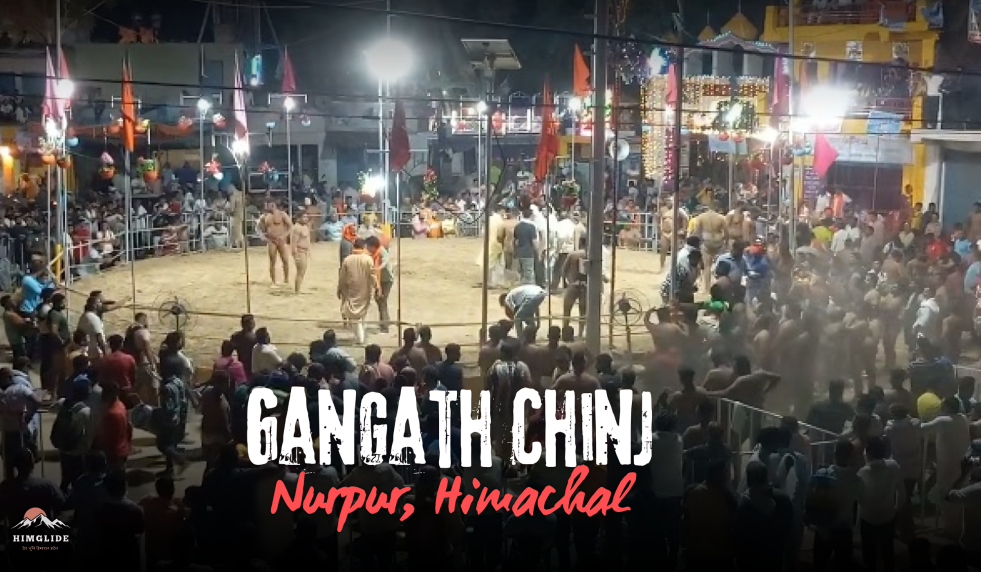Are you on the lookout for a picturesque but spiritual trekking destination in Himachal Pradesh? Look no further than the Churdhar Trek — one of the stunning journeys to the outer Himalaya’s highest summit. Famous for its panoramic visions, thickly forested terrains, and religious importance, Churdhar has an experience that combines peace, nature, and adventure under one roof.
Whether you’re an experienced trekker or a first-time trekker looking for a soul-reviving trek, this article will make you familiar with the Churdhar trek distance, the best time to go to Churdhar trek, how to reach, what to carry, and more.
Introduction to Churdhar Trek
Churdhar (Chur Chandni) is a holy mountain situated in the Sirmaur district of Himachal Pradesh, measuring 3,647 meters (11,965 feet) in height. “Chur-dhar” literally translates as “Mountain of the silver bangle” because it is covered with snow.
The hike is so-called in honor of Chureshwar Mahadev, a manifestation of Lord Shiva, who is said to have sat in meditation here. The summit is a site of profound religious significance to residents, particularly during the summer pilgrimage months.
Churdhar Trek Distance & Route Details
Understanding the Churdhar trek distance is essential for proper planning. There are two main routes you can take:
1. Nohradhar to Churdhar (Main Route)
- Total Distance: Approx. 18 km (one way)
- Duration: 7–8 hours uphill; 5–6 hours downhill
- Difficulty Level: Moderate to Difficult
- Altitude Gain: From 2,000m to 3,647m
This is the most followed track, with a thick deodar and oak jungle, grasslands, and picturesque views. Along the way, there are several small shrines, langars (free food stalls during yatra season), and lots of resting points.
2. Sarahan to Churdhar (Alternate Route)
- Total Distance: Approx. 7–8 km (one way)
- Duration: 3–4 hours uphill
- Difficulty Level: Easy to Moderate
This trek begins from Chaupal (Shimla District) and is relatively shorter. It’s perfect for those who prefer a less strenuous trek but still desire to witness the splendor of Churdhar.
Churdhar Trek Best Time to Visit
While planning your trip, the best time to visit Churdhar trek is very important both in terms of safety and scenery.
Best Months:
- May to June: The snow has melted, the way is open, and the woods are green and verdant.
- September to early November: Clear skies and good weather after monsoons is ideal for photos and mountain sights.
Avoid These Months:
- July to August: Torrential monsoon rain leads to greasy trails and leech issues.
- December to March: The area is heavily snowed, rendering the trail impassable and hazardous without professional equipment and assistance.
Always check the weather forecast first before you plan, as the weather can change very quickly in the hills.
Also Read: Paragliding in Solang Valley: A Himalayan Dream Come True

Spiritual Significance of Churdhar
Aside from its natural beauty, Churdhar trek has a great religious significance. There is a Shivling and temple of Lord Shiva (Chureshwar Mahadev) at the top. Devotees of Himachal, Uttarakhand, and even Haryana come here on a spiritual yatra.
It is also believed that Lord Hanuman discovered the Sanjeevani Booti (miracle herb) here in the Ramayana period. These myths turn the trek not only into an adventure but a spiritual journey.
What to Expect at the Summit
Once you reach the top, you’re greeted with:
- 360-degree panoramas of the Great Himalayas
- Glimpses of Kinnaur, Kedarnath, Badrinath, and even of the Gangetic plains on clear days
- A colossal Lord Shiva statue
- Snow (in early summer and late autumn)
There is open meadow camping near the summit. A forest rest house and a dharamshala (pilgrim lodge) are also present near the temple.
What to Pack for Churdhar Trek
To ensure a comfortable and safe journey, pack wisely:
- Trekking shoes with strong grip
- Woolen clothes, gloves, and cap (even in summer)
- Raincoat or poncho (especially during monsoon)
- Water bottle (2L minimum), energy bars, dry fruits
- First-aid kit and medicines
- Flashlight, sunscreen, sunglasses
- Power bank and ID proof
- Optional: Trekking pole and a light backpack
How to Reach the Churdhar Trek Base
Nohradhar Base (Sirmaur District)
- From Shimla: 130 km via Solan–Rajgarh
- From Chandigarh: 190 km via Nahan–Sangrah
- From Solan: 90 km approx.
Local buses, shared taxis, and private cabs are available from Solan, Nahan, or Rajgarh to Nohradhar.
Sarahan Base (Chaupal Side)
- Best reached from Shimla via Chaupal. Less popular, but scenic.
Accommodation Options
- Nohradhar: Simple homestays and guest houses on offer
- On Trek Route: Forest rest houses, small shops, and open spaces for tents
- At Summit: Dharamshala and temple accommodations during pilgrimage season
Final Thoughts
The Churdhar Trek is a package deal — adventure, nature, and divinity all rolled into one unforgettable experience. Whether you’re pursuing stunning vistas, putting your trekking endurance to the test, or looking for blessings of Lord Shiva, Churdhar will not disappoint.
With a reasonable Churdhar trek length, good planning, and visiting at the right time during the best season, this trek can be the crowning glory of your Himachal Pradesh trip.
FAQ’s
What is the total Churdhar trek distance from Nohradhar?
The distance is approximately 18 km one way, making it 36 km round trip.
What is the best time for Churdhar trek?
May–June and September–November are the best months for a safe and scenic trek.
Is the Churdhar trek difficult?
It’s of moderate to difficult difficulty depending on the route and your fitness level. Beginners should take breaks and stay hydrated.
Is camping allowed on Churdhar Trek?
Yes, camping is allowed in meadows before the summit, but it’s advisable to carry your own gear.
Is there mobile network on Churdhar trek?
You might get signal in lower areas, but no network is available at the summit.







